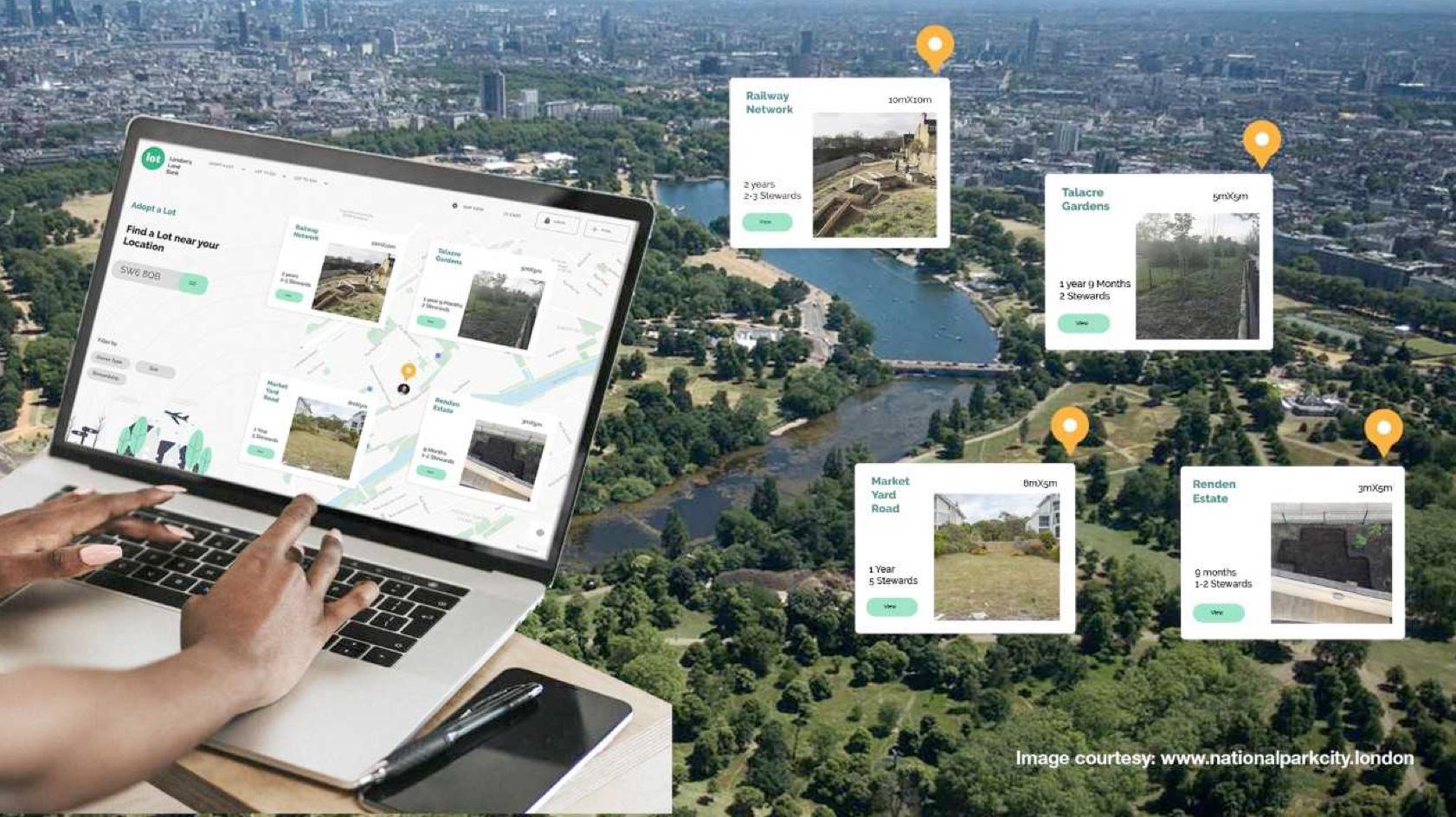
LOT London’s Land Bank - linking local people with owners of underutilised land for urban agriculture.
LOT – Introduction and Background:
LOT is a conceptual project which is currently being developed to help people identify spaces for community gardening around London. It aims to link the owners of underutilised spaces (including local authorities, developers and private individuals) with interested local residents, through the innovative use of digital media. The scheme is currently being developed by Francesco Cagnola and Astha Johri - two design professionals who met during their MA studies at London’s Royal College of Art. They plan to take forward the scheme as a functioning pilot project within the City.
Through their work with communities, local authorities and diverse stakeholder groups around the Capital, LOT has identified the potential for more productive use of vacant and derelict land. In particular, they have observed significant areas of under-utilised and neglected spaces within cities which are inaccessible by local citizens who are interested in Urban Agriculture and growing food. Due to lack of transparency around land ownership and the lack of a legal mechanism to use such locations, people are currently unable to grow their own food or improve their local biodiversity despite being a strong willingness to do so.
How will LOT work ?
To address these issues, LOT aims to provide a pioneering service which will facilitate the identification of neglected land and thereby enable its allocation to citizen-led projects, either on a short or a longer-term basis. This will help turn underutilised land into productive food growing or biodiverse spaces which can benefit the wider community.
The concept behind LOT is simple: citizens will be able to view on the online map showing available sites and then claim/utilise these by uploading a project proposition. As a broker between landowners and communities, the project aims to standardise terms and conditions of land use and make it available on a temporary basis. LOT aims to decentralise the management of green infrastructure by giving people the chance to become caretakers of land and to contribute to the conversion of neglected spaces in their area into productive areas.
The combination of physical signage on the available plot, linked with the information and functionality of the digital platform, will enable diverse communities to engage with the sites in their local area. People will have the opportunity to view ongoing projects, the stakeholders involved and to gain understanding about the legal implications of land use, including any pitfalls or potential restrictions. The project will work with local authorities, land developers and private land owners by enabling them to list empty, underutilized or temporary spaces awaiting development on their platform.
How will LOT structure and finance its activities ?:
The Project intends to finance its operation through charging owners a management fee for provision of community engagement services, when the land is claimed and being maintained. Additionally, local communities or individuals who intend to utilise the land will be required to pay a one-off, nominal administration fee for using the services of the Platform.
By collaborating with interested landowners, LOT will identify unused land and negotiate the land rights and tenure conditions of identified areas on behalf of interested parties. Their bottom-up approach to green space management will reduce maintenance burdens for local authorities, make communities more food secure and enhance biodiversity. Furthermore, is envisaged that participation will improve physical and mental wellbeing of residents and result in increased community cohesion, as opposed to other potential solutions such as food banks.
Contact for LOT: fran.cagnola@gmail.com
Video YouTube:"The presence of logos shown in the video is for purely for demonstration purposes and does imply or indicate an existing LOT partnership".



